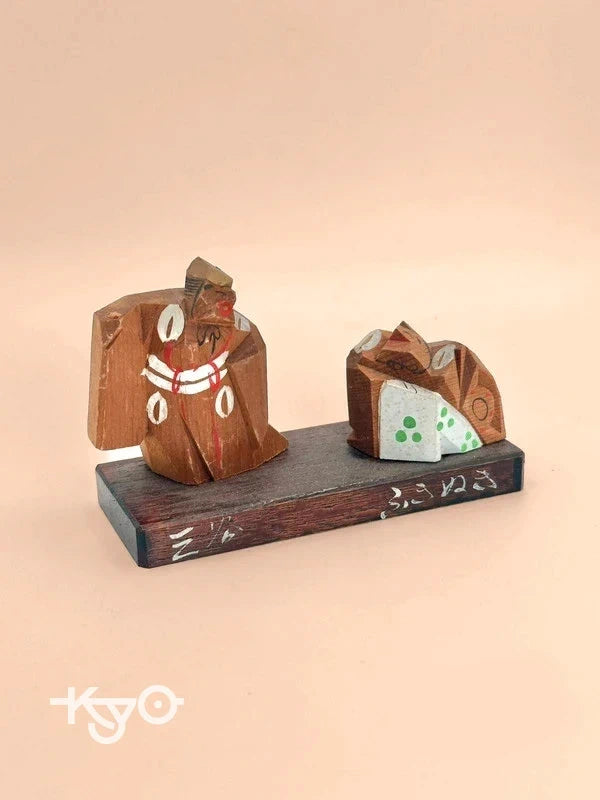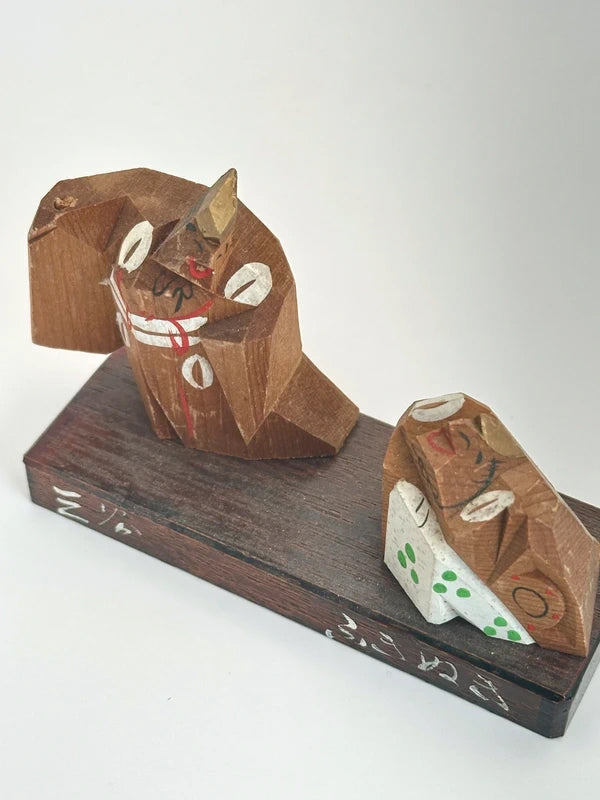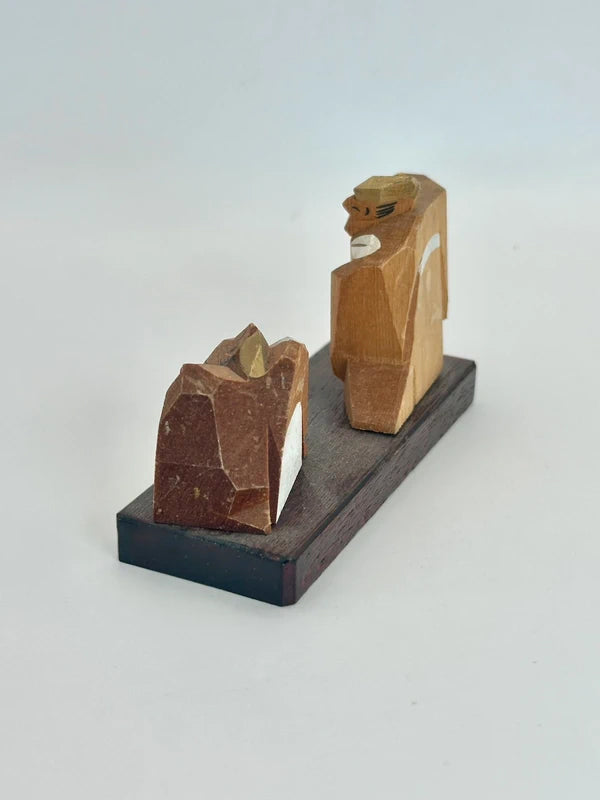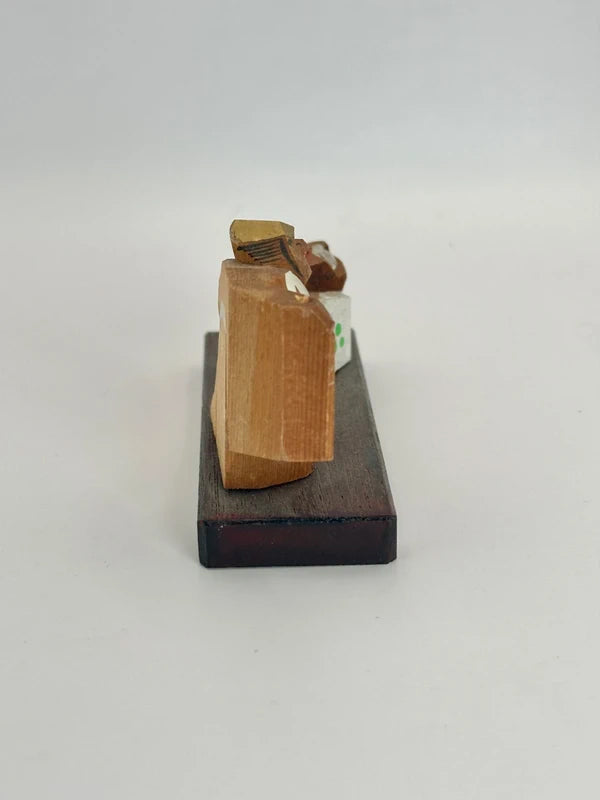FT131 - Japanese craft Ittōbori Mikawa Manzai 三河万歳
FT131 - Japanese craft Ittōbori Mikawa Manzai 三河万歳
A vintage wooden folk sculpture ittōbori 一刀彫. It is a style of "one-knife carving" depicting the joyful art of 三河万歳 (Mikawa Manzai), a celebratory performance with deep roots in Japanese New Year customs.
Manzai (万歳) is a traditional form of ritualistic celebratory performance, typically done around New Year. Unlike the modern comedy version, classical Manzai involves chanting, dancing, and blessings. Mikawa Manzai is one of the oldest and most culturally rich forms, performed to bring good fortune, health, and prosperity to households. Performers visit homes, singing auspicious songs and offering blessings — a practice rooted in Shinto tradition and folk spirituality.
The standing figure is the Tayū (太夫), the lead chanter, wearing a decorative headdress and painted cords. The seated figure is the Sarai (才蔵) or companion/jester, often playing a drum or accompanying the main performer with humorous commentary. They are mounted on a lacquered wooden base with the inscription 三河万歳 (Mikawa Manzai) — referencing a regional variant of this celebratory art from Mikawa Province (modern-day eastern Aichi Prefecture). It's a symbol of Fortune. These figures are emblematic of New Year's luck and household prosperity. The ittōbori carving style captures the spirit of Japanese mingei (folk craft) — valuing handmade imperfection and raw, honest beauty.
一刀彫 (Ittōbori) is a carving technique known for its angular, faceted cuts and minimalistic, expressive design, often left unpolished to highlight the raw quality of the wood.
Size: 9 x 3.5 x 5.5 cm
Share












